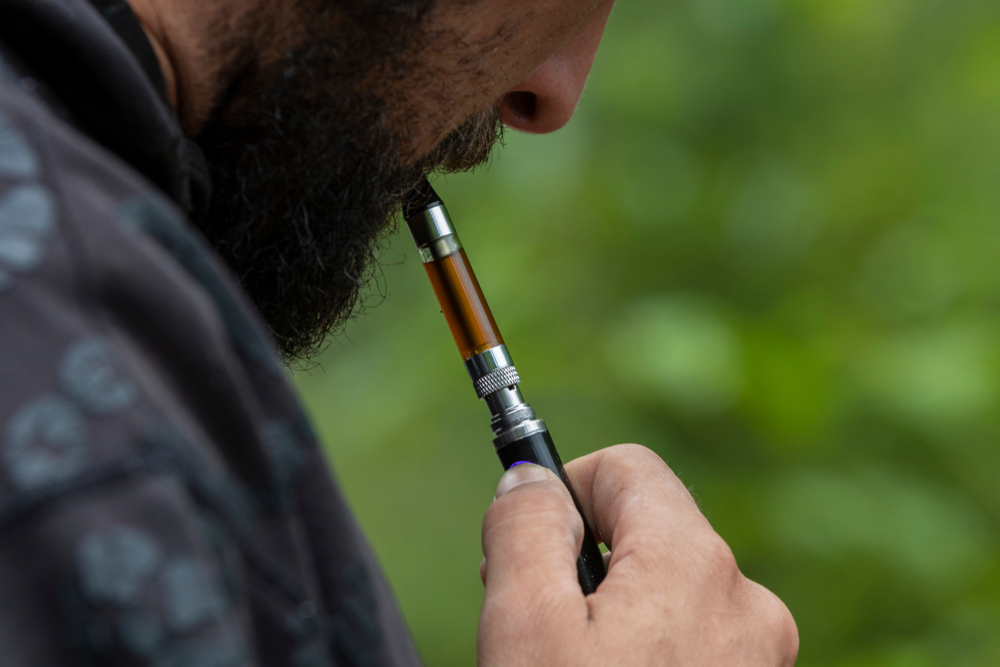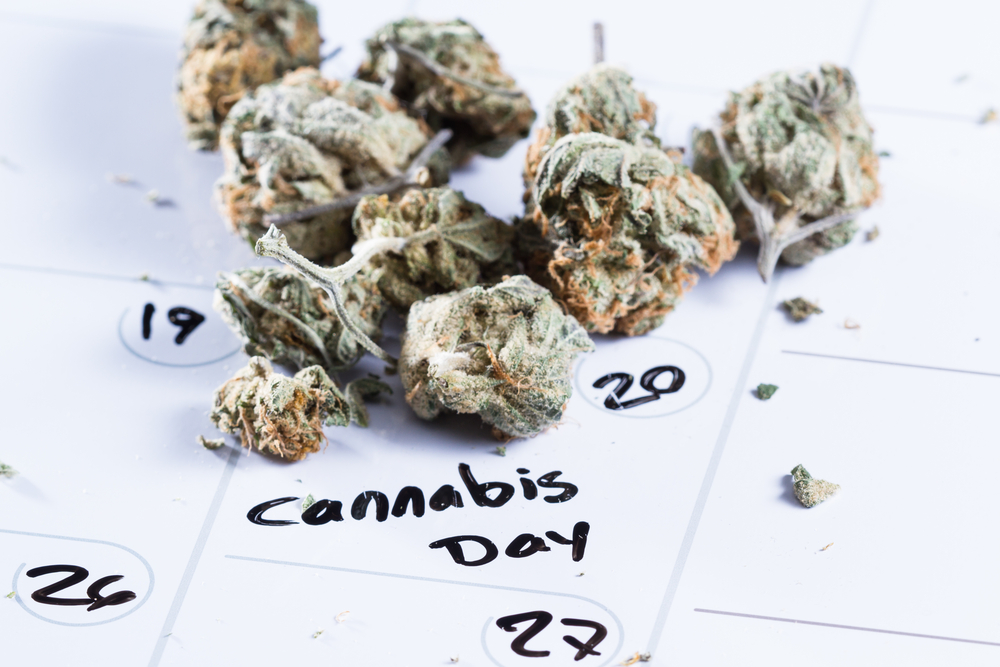Do you remember the first time you got high and how hard it hit because your cannabis tolerance was so low? How much weed did it take for that to happen? Probably not a lot.
Now, compare that to the amount it takes now. Do you have to smoke more of your joint or eat a bit more of that brownie to achieve your ideal high?
This progression is due to the increased resistance of your cannabis tolerance. Tolerance varies from person to person. It’s likely something that you’ve already noticed in the context of your friends needing a bit less or a bit more to get on the same level.
As cannabis use increases, your body will become accustomed to the compounds in the weed and require higher doses to produce the same effects. That’s great for your regular dispensary and the cannabis industry, but not so much for your pocket.
So, what is cannabis tolerance, specifically, how do you measure it, and why does it change? Today, we’re here to cover all this and more, so let’s get started!
What is Cannabis Tolerance?
Cannabis tolerance refers to how your body, more specifically, cannabis receptors in the brain, have adapted to cannabinoids such as THC and CBD. In other words, cannabis tolerance is the body’s resistance to cannabis.
The science behind it is simple.
When we use cannabis, it activates the CB1 receptors in the endocannabinoid system. Essentially, the more cannabis we use, the more these receptors become activated. Over time, they will become desensitized, meaning the psychoactive response of THC will become dampened.
Long-term use will then result in internalization, which can lead to the retraction of CB1 receptors. When this happens, you won’t feel the effects as strongly or at all.
That said, before you freak out, the CB1 receptors do regenerate over time. However, they will need a break from weed to do so. Otherwise, continuing to use weed frequently will have the opposite of the intended outcome, and the effects will remain dampened.
While science does not yet fully understand the timeline of building up a tolerance to cannabis, certain factors play a key role, such as genetics, biology, frequency of cannabis use, and potency.
For more information on what the endocannabinoid system is and how weed affects it, check out our full guide here.
How to Measure Your Cannabis Tolerance

Before you start to panic, you can rest assured that measuring your cannabis tolerance does not involve any mathematical formulas or equations. However, it’s not as simple as a yes or no check box or multiple-choice quiz.
In other words, it’s the sort of thing you’ll have to find out through self-observation.
The next time you use weed, pay attention to the dose. Try this activity with THC cookies, if possible, or another form of cannabis whose dosage is precise. You may try this with a joint or a vape, but it will be a bit more complicated.
Split your cookie into portions. Let’s say it is 100mg THC, so each 1/4 would be 25mg. Eat one portion and wait for about 30 minutes, or when you feel it ‘kick in.’ Take note of how long it takes to wear off.
After that, try another piece and some more on another occasion. You’ll notice that the effects are not as strong as before. Therefore, your tolerance is greater than 25mg.
When using a joint or spliff, you’ll have to use another unit of measurement since they aren’t standardized, and their shape isn’t as precise, meaning some people roll them skinny, while others like their joints fat.
So, take a puff. If you feel its effects, see how long it takes to wear off. Your tolerance may end up being 1/4 joint, depending on the potency of the weed itself.
While these are only rough measurements, they’re extremely useful and can serve as an easy at-home gauge for where your tolerance is. Once you have to increase the dose to reap the benefits, it means your tolerance has increased.
How Fast or Slow Does Your Tolerance to Cannabis Change?
Well, it all depends. Remember how we said that tolerance varies from person to person? The rate at which cannabis tolerance changes is also subject to the individual user and their usage habits.
For some, a night of smoking with friends can cause tolerance to increase. Similarly, that same tolerance may only take a day or two to reset. This quicker readjustment is common among occasional to rare users who don’t have much weed in their system, to begin with.
For heavier, more frequent users whose bodies already have a high THC content, every use increases tolerance, especially since they require higher doses to feel the effects.
This increased resistance is common among medical marijuana patients who require high weekly doses to relieve chronic pain and other conditions.
All this is to say that, unfortunately, there is no reliable method for determining the rapidness of cannabis tolerance changes. Ultimately, it comes down to how your unique endocannabinoid system reacts to weed, how often you consume cannabis and your distinct physical and biological makeup.
How to Reset Your Cannabis Tolerance
While there are specific timelines for resetting your cannabis tolerance based on the criteria we just touched on above, there are methods you can participate in to try and kickstart the process, some of which we will outline below.
Tolerance Break

The best way to reset your cannabis tolerance is to take a tolerance break. This practice is exactly what it sounds like – taking a break from using cannabis.
Otherwise called a T-break, a tolerance break is a period of reduction or abstinence of cannabis consumption. For light users, abstinence is easy to manage, as there are unlikely to be any weed withdrawal symptoms.
However, regular users may gradually decrease their tolerance to avoid cannabis withdrawal symptoms such as anxiety, insomnia, nausea, headache, cravings, mood swings, vivid dreams, and stomach aches.
A tolerance break may last anywhere from a week up to a month, depending on the frequency of use. During this time, the CB1 receptors will replenish, and sensitivity to THC will return.
The first type of tolerance break you should try is called an endocannabinoid reset. This T-break typically lasts for two weeks and should allow lower dosages to work in time. While your tolerance may not be the same as before you started cannabis use, it can help cut it significantly.
If this is not enough for chronic users, a four-week break is recommended.
You can also use tolerance breaks to control your tolerance. In other words, taking a tolerance break at the end of every month or every two months will prevent it from getting too high. It can also help to shorten the length of these breaks.
Don’t know where to start? Check out our guide with helpful tips and tricks on how to start your T-break.
Other methods
While tolerance breaks are the most effective way to reset your cannabis tolerance, many other methods can also make it more efficient.
Such approaches include:
- Exercise – THC is stored in the fat cells of the body. Therefore, users with more body fat generally require more to feel its effects and are more likely to develop higher tolerance. Studies have shown that working out can help to reduce THC levels in the body.
- Using CBD – CBD, also known as cannabidiol, is another cannabinoid present in cannabis. Unlike THC, CBD does not have a psychoactive effect and does not affect the function of the CB1 receptors. However, it does help balance and even counteract some of the effects of THC and may be used to manage several health conditions.
- Changing Your Consumption Method – If your consumption method includes high potency cannabis products, you may want to revert to joints or using a bong or vape. This switch gives you greater control of how much you ingest, and ultimately your tolerance.
- Hydrate and Eat Well – The more optimally your body runs, the faster it will remove toxins and other substances such as THC. These healthy habits will also benefit you in the long term as they promote overall health.
Final Word
Your cannabis tolerance increases whenever you use cannabis and largely depends on the frequency of use, potency, genetics, and your specific physiology and biology.
While there are no official tests to measure one’s cannabis tolerance, using observational skills can give you a general idea of where your particular levels are at.
It’s always better to have low tolerance, as you’ll require less cannabis to achieve the desired benefits. If you want to lower your tolerance, it’s best to take a tolerance break of roughly two weeks.
You may also support your body during this time by adhering to a workout routine, using CBD, changing your consumption method, and eating a well-balanced diet.
Ultimately, readjusting your tolerance may take some work, particularly if you’re a frequent user. In these cases, completely abstaining from weed may not be the most effective long-term solution. Instead, gradually decreasing your dosages until you’re able to go without for two weeks would be the most practical approach.
Good luck!


 No products in the cart.
No products in the cart.